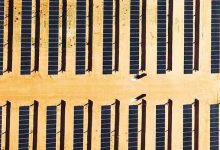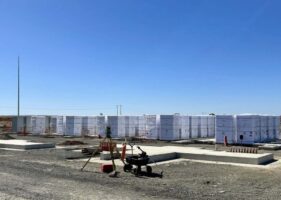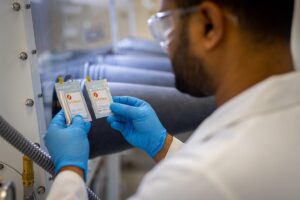Gentari Solar Australia, the newly renamed renewables offshoot of Malaysia oil giant Petronas, has unveiled plans to build a portfolio of up to 8GW of solar, wind and storage capacity in Australia, as part of a massive global push into renewables by its parent company.
Gentari is the renewable energy arm of Petronas, and in February this year took control of Wirsol Australia, a leading solar developer. It unveiled the company’s rebranding and expansion plans at a launch event in Sydney on Tuesday.
“Our targets are ambitious,” Gentari CEO Sushil Purohit said at the launch. The company’s chief renewable office, Kian Min Low, says the company plans to build up to 40GW of renewables capacity around the world, pretty much from a standing start of just 3GW now.
The plans include big investments in India, Malaysia, and between 5GW and 8GW of renewables and storage capacity in Australia, with a mix of green fields development and buying existing assets.
Gentari also plans to build a green hydrogen production platform that will produce 1.2 million tonnes a year, and it has ambitions to grab a 10 per cent share of the EV charging market in the Asia-Pacific region.
“It’s a big leap … but we want to make a change and make a difference,” Low told RenewEconomy at the launch. “It is a very large target … everybody acknowledges that. And we will have to get there, like I said, through both organic and inorganic means.”
Gentari Solar Australia currently has 422 MW in gross installed capacity and 765 MW in its “near term” pipeline of projects, including two solar and battery projects at Maryvale, near Wellington, in New South Wales and Barnawartha in Victoria.
Both those projects are expected to reach financial close soon. To put its Australian plans in context, it compares with the plans by AGL to build 12GW of renewables and “firm capacity” by 2035.
Andrew Barson, the head of Wirsol Australia who will continue as the head of Gentari Solar Australia, says his brief is to focus on solar and battery storage in the short term, with wind power down the track.
The two new projects – Maryvale and Barnawartha – are interesting because both will feature DC-coupled solar and battery storage, which means putting the batteries behind both the connection point and the inverter.
This allows the output of solar to be smoothed, and stored for higher priced evening peaks – and is useful for the curtailment that often happens in the grid, either due to network limitations or because wholesale prices have gone into negative territory.
The Maryvale project will feature a 170MW/340MWh battery, while the Barnawartha solar project will have a 60MW/120MWh battery.
Low says Australia is an attractive destination, both because of its stated renewable policies – an 82 per cent renewables target from the federal government by 2030, and various legislated state-based targets – and because of its excellent resources.
“Australia is a lucky country, for a lot of reasons and it will continue to be the lucky country for the next few decades.
“It’s got plenty of renewable resources that are available. It’s got plenty of minerals that will support the energy transition, and it has open access in terms of its economy. It’s got great financing infrastructure, so it’s got a lot of positives.
“I think Australians need to embrace what you’re really, really good at, and you’ve got all of these, rather than try and benchmark yourselves whether you’re number one or number two or number three.
“I think the fact that we are here, you know, shows that if we have confidence in our ability to deliver some significant growth in Australia.”
Gentari is also involved in a major solar and battery storage project – 2GW of solar and 4.4GWh of battery storage – on the Riau Islands in Indonesia, part of a consortium with New Zealand’s Morrison & Co aiming to feed that power into the Singapore grid.
The consortium is one of five that have been awarded conditional letters of agreement by the Singapore authorities, and at least three of them are combing to work on a joint sub-sea cable – with a capacity of 1GW – to feed into the Singapore grid.
“It’s quite an interesting development, because that actually shows how three different consortia can come together to build a common infrastructure,” Low says.










